In the small sportsbike orbit, the 2022 KTM RC 390 sings from a different song sheet than its competition
Having recently ridden the Yamaha YZF-R3 (AMCN Vol 72 No 05), it’s difficult not to treat this test of the 2022 KTM RC 390 as a direct comparison between these two small sporties. After all, along with the Kawasaki Ninja 400, they are direct competitors in the marketplace as well as on the track in the Supersport 300 class.

But this is a road test, not a track test, although after riding it I certainly wish I had more time to play around with the 2022 RC 390 on a racetrack because it would be an absolute hoot.

But let’s get back to the road where, despite their obvious similarities, the R3 and the RC 390 are nothing alike when it comes to the riding experience… and this is because the R3 runs a 321cc parallel twin that demands you wring its neck to get the most out of it, whereas the
RC 390’s 373cc single makes plenty of useable torque throughout the rev range. As a result, the RC 390 is much easier to ride on the road than the R3, the former forgiving of the lazy rider who can’t always be bothered downshifting for slow corners or when overtaking.
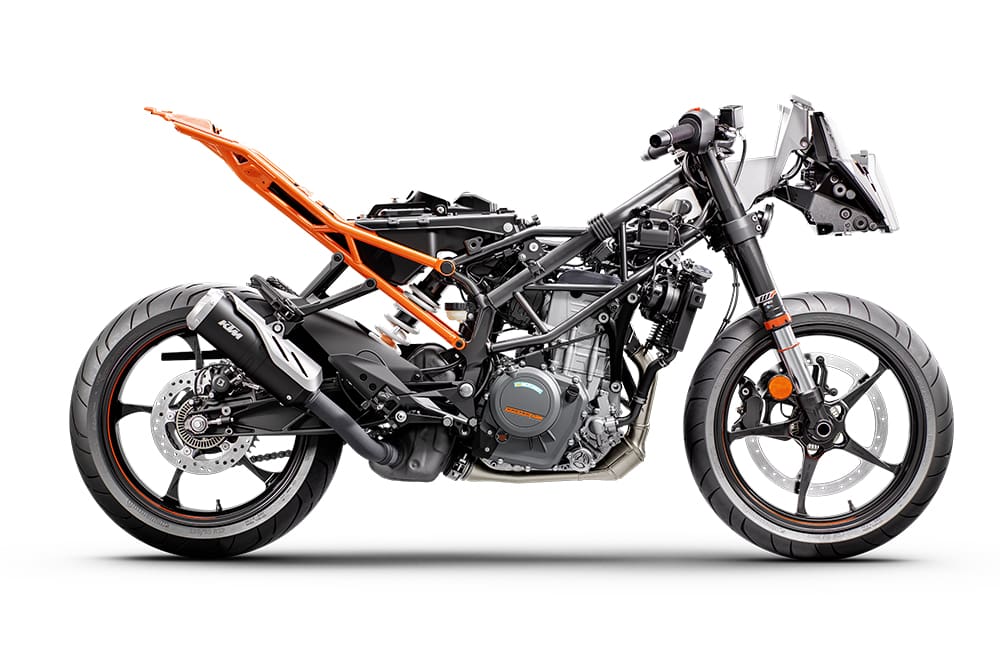
The claimed peak power and torque figures of each bike tell the story. The YZF-R3 makes 30.9kW of power at 10,700rpm and 26.9Nm of torque at a lofty 9000rpm. By contrast, the RC 390 makes 32kW at 9000rpm and 37Nm at 7000rpm. Yep, the RC 390 whips the R3 when it comes to real-world, usable torque – and at much lower revs. In fact, the RC 390 now makes the same peak torque as the larger-capacity 399cc parallel-twin Kawasaki Ninja 400, but at lower revs – the Ninja’s peak torque is a claimed 37Nm at 8000rpm, although it still pips the RC 390 for peak power with a claimed 35kW at 10,0000rpm on tap.
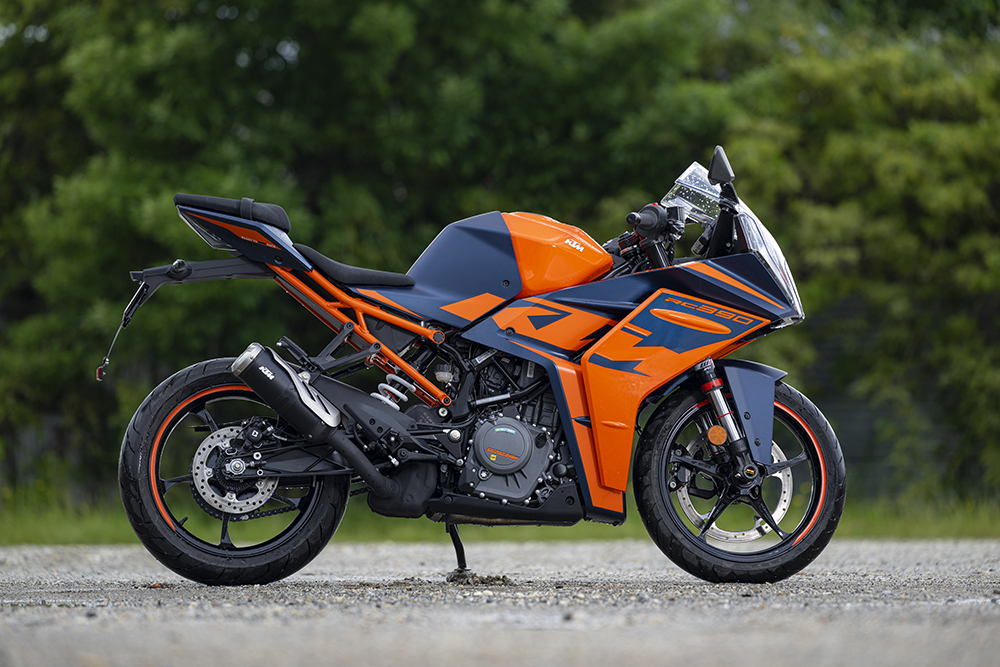
For the MY22 update, KTM engineers paid plenty of attention to the RC 390’s 373cc single, adding a 40 percent larger airbox and revising the engine mapping with the aim of providing increased torque and improved throttle response across the rev range. Despite this focus on torque, the RC 390 still has plenty of punch up top and, if you crack the throttle wide open in the lower gears, the tacho will race to the redline where the rev limiter will eventually cut the fun at 10,000rpm. Quite the ride!
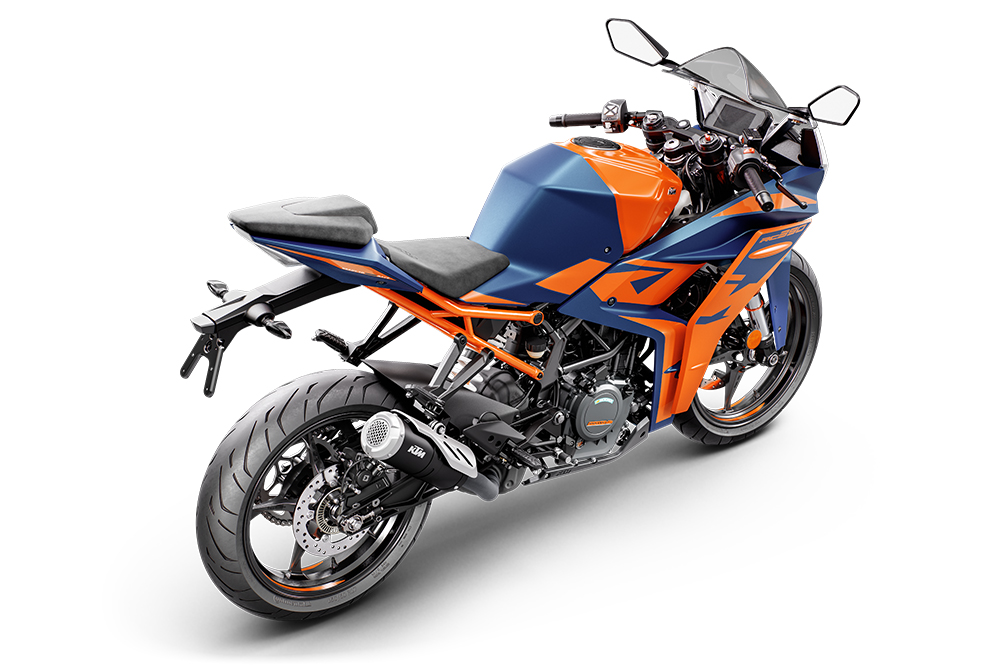
The RC 390 now has a ride-by-wire throttle, and this allows for the fitment of an optional quickshifter. Throttle response is impressive throughout the rev range, and the engine will pull cleanly in top gear from as low as 5000rpm – but it’s nearer the 7000rpm torque peak where it’s at its happiest.

The final engine tweak is the fitment of a new, lighter exhaust system, with a stainless-steel header pipe and an aluminium muffler. According to KTM, this is said to produce a slightly different “racy” note; whether racy is the right term I’m not so sure, but it no longer has that dirtbike sound of the previous model. There’s still a single thumping away under that orange fairing and, as you’d expect, there’s some vibration to be felt through the handlebar and seat at low to middling revs, but get into the upper half of the rev range and it smooths out completely.

The six-speed gearbox offers a good spread of ratios that are well mated to the torquey engine. The shift quality is buttery smooth, both up and down the ratios, and the clutch is spot-on; it’s well weighted and progressive, making quick getaways from the traffic lights a simple and fuss-free affair. There was no quickshifter fitted to our testbike, which is a pity because I reckon it would be a welcome addition to the spritely package. If I was in the market for an RC 390, I’d definitely tick that Quickshifter+ option box.

As well as the engine tweaks, KTM has now equipped the RC 390 with cornering ABS and cornering traction control, making it the first bike in this segment to feature such advanced technology. There’s also Supermoto ABS, which is KTM-speak for switchable ABS on the rear, allowing riders to lock up the back wheel to slide into corners. This system also allows for extra braking pressure to be applied up front before the ABS kicks in, so riders can lift the rear wheel without fear that the ABS will intervene too early. Oh, and the slipper clutch prevents rear-wheel lock ups, so another great feature.

The braking hardware has also been upgraded for MY22, with a radial-mounted four-piston ByBre caliper up front gripping a single 320mm disc, and a single-piston caliper at the rear mated to a 230mm disc. That solo front brake is a ripper of a thing; it offers loads of stopping power and excellent feel at the lever. Combined with the effective rear brake, the RC 390 pulls up quickly under hard braking and offers great stability. Adjustable brake and clutch levers are a nice touch on a bike at this price point, too.
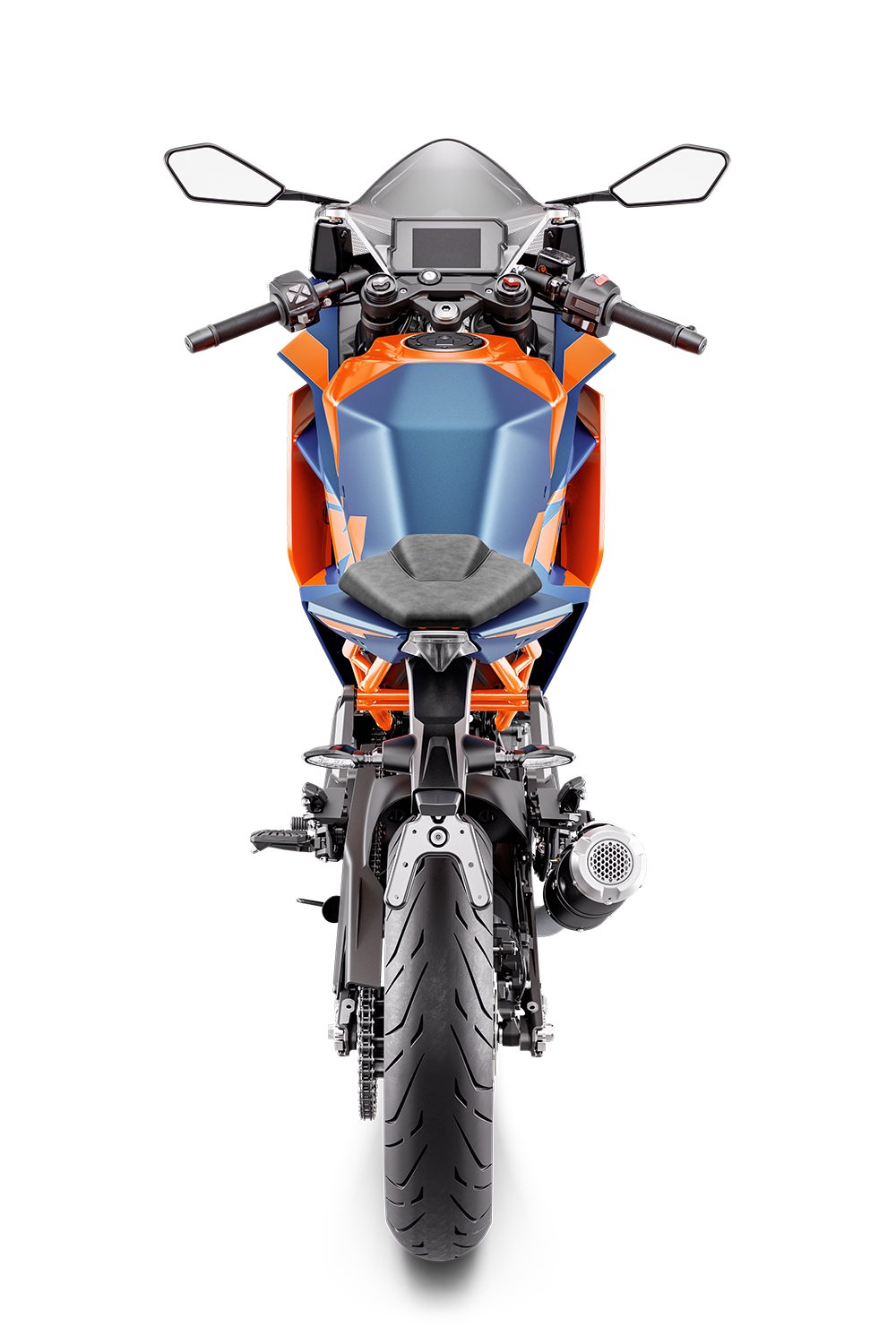
There have been plenty of other significant upgrades under that sleek new MotoGP-inspired bodywork, including a focus on weight saving. KTM claims that 1.5kg has been shaved off the chassis, while the fitment of lighter wheels has saved another 3.4kg, and the new braking package is 960g lighter than before. All up claimed dry weight is a lithe 155kg, which equates to around 164kg wet, so it’s a few kegs lighter than both the YZF-R3 and the Kawasaki Ninja 400.
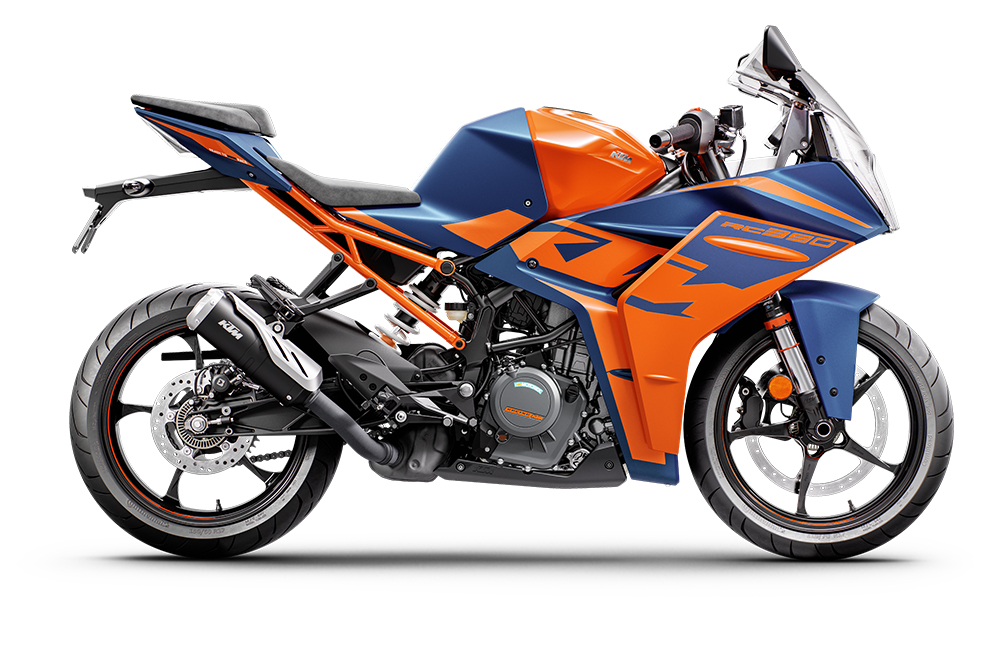
The RC 390 is so easy to flick from side to side, no doubt partly because of its light weight and not-so-fat tyres – it wears a 110/70-17 up front and a 150/60-17 at the rear – and also because of the surprisingly wide handlebar. When it comes to carving up corners, there aren’t too many bikes that would keep up with the little RC 390… on downhill runs at least.

There’s plenty of ground clearance and once cranked over the RC 390 holds its line beautifully through corners. One section of my regular test loop has a few nasty mid-corner bumps that throw plenty of bikes off line, but the RC went through them without bother. The suspension has also been upgraded for MY22, and the RC now sports a new 43mm WP APEX fork with 30 clicks of compression adjustment on the left leg and 30 clicks of rebound adjustment on the right leg, while down the back there’s a preload and rebound adjustable WP APEX shock. The fork adjusters are easy to access and use, and they will no doubt please those who ride on the road and the track. On the road, the suspension provides fantastic ride quality over a variety of surfaces, and great control when braking and cornering.
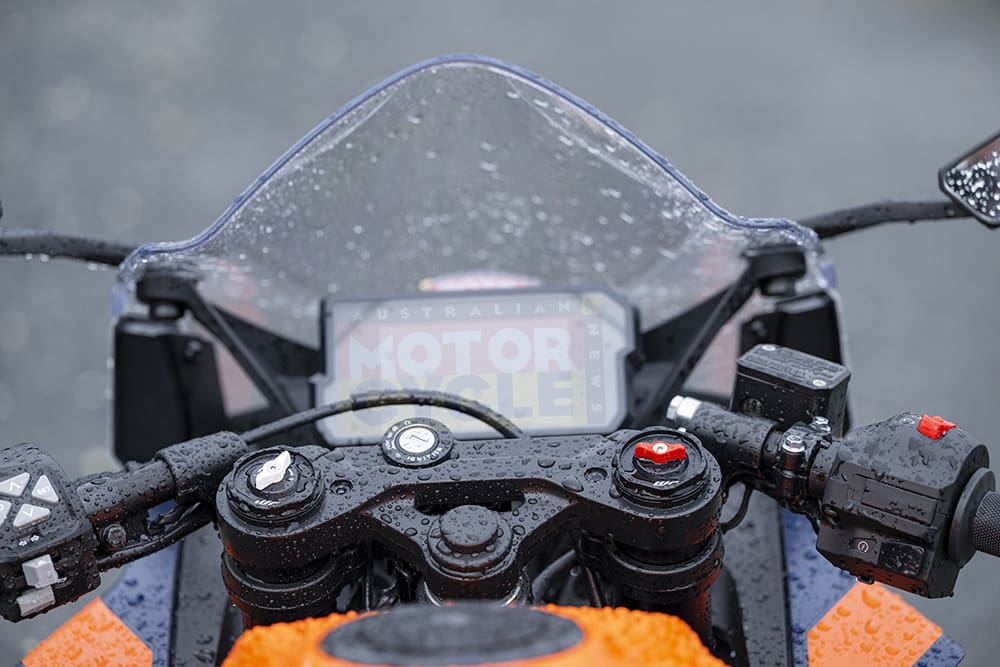
Likewise, the Continental ContiRoad rubber is grippy and offers good feedback, and after just a short time in the saddle I found myself braking deeper and deeper into corners. The front-end inspires plenty of confidence on the road, which would no doubt translate into miles of smiles on the track. In fact, so confidence inspiring is the RC that I found myself diving into familiar corners at much greater speed than I was used to, and then halfway through realising I could have gone even harder. As a result, I would wind on the throttle early when exiting corners, knowing that the predictable power delivery and the cornering traction control would keep me out of strife.
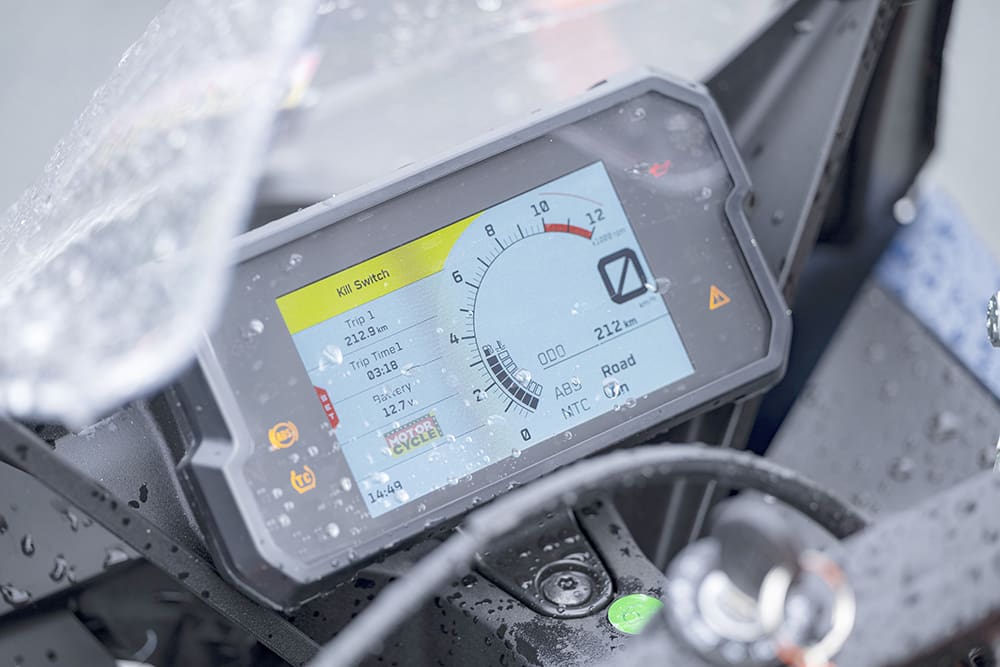
The riding position is surprisingly comfortable, although this might not be the case for taller riders – I’m a 167cm shorty. The reach to the clip-ons is more than acceptable for road use, and the seat is high enough that the ’pegs didn’t make me feel cramped, while the small-ish seat offers decent cushioning and support. I even had enough room to tuck in behind the generous screen, which you really need to be able to do when you only have 32kW to play with.
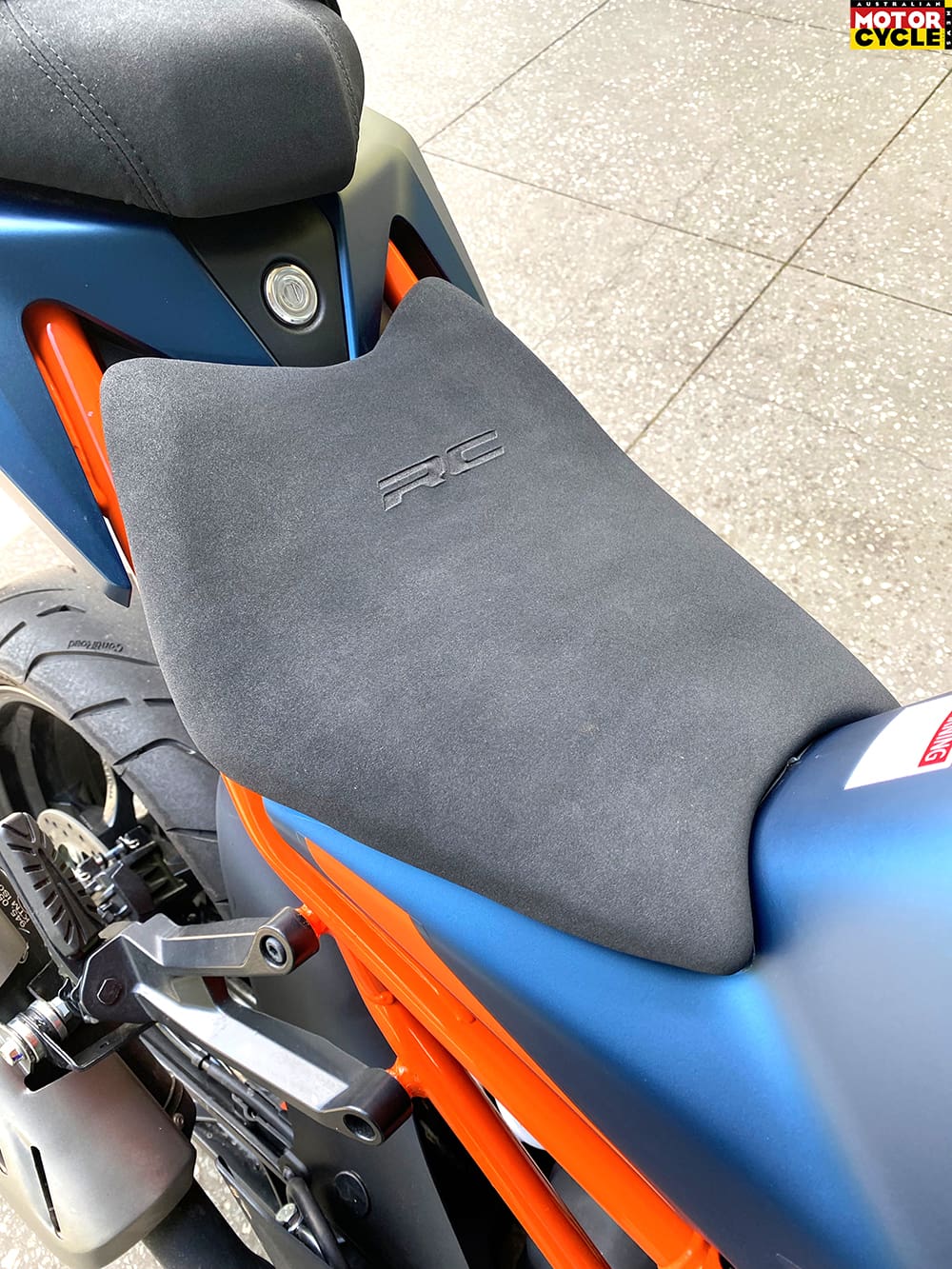
The 824mm-high seat is quite tall for a small bike, but the RC 390 is narrow where the seat meets the tank, making it easy to get your feet down at standstill, and also to move your body about when throwing the bike around in corners. There’s a pillion seat, too, but you wouldn’t want to subject anyone to long stints on it.

The controls will be familiar to anyone who has ridden a modern KTM or Husqvarna. There are up, down, enter and return switches on the left switchblock to navigate through functions on the colour TFT screen. You can tailor the information displayed at any one time and the screen automatically adjusts to the ambient light. It’s all quite logical once you get used to it, and the vital information – speed, tacho, and gear position – is clearly displayed. Secondary info is quite small, but this screen is obviously not designed for 50-plus year-old eyes.
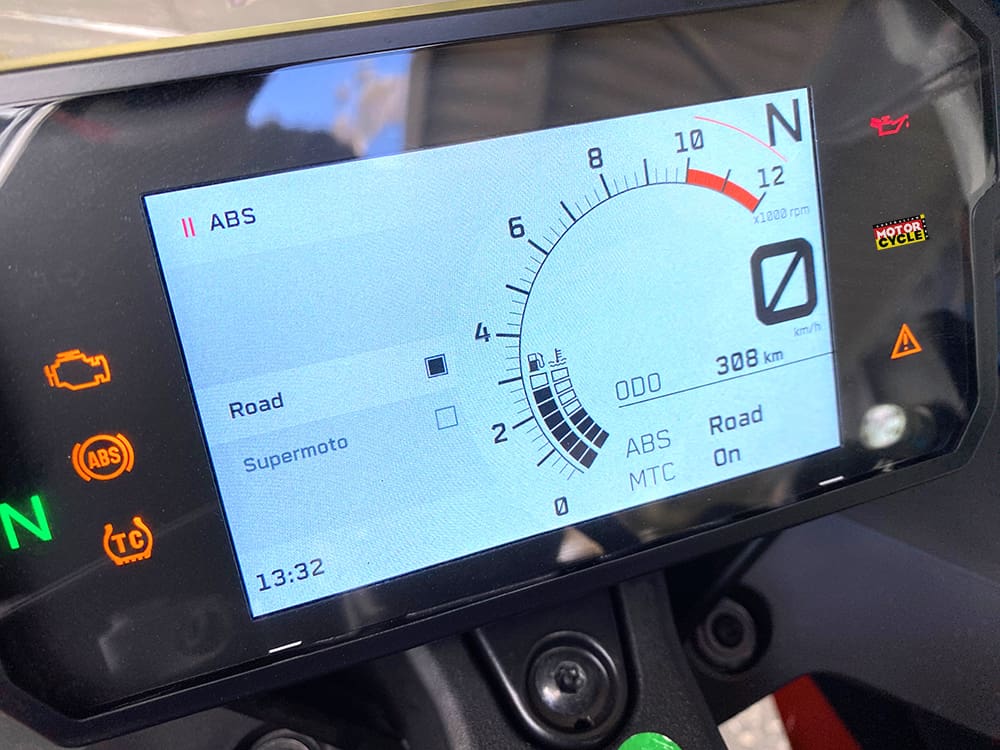
I absolutely loved riding the RC 390. It really is a small sportsbike that you could live with every day. It offers fantastic and useable performance, razor-sharp handling, super-strong braking and great ergonomics. Throw in cornering ABS and cornering traction control, and it just ticks so many boxes.

Test Dean Mellor Photography Incite Images, DM, KTM